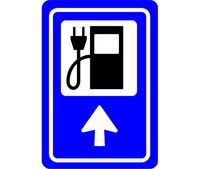We’ve grown accustomed to hearing about the future of motor vehicles either from good-news presidents (All-electric vehicles and hydrogen fuel-cell-powered cars are just around the corner!) or from arm-waving futurists (We can’t seem to find Malaysian Airways Flight 370, but computer-controlled driverless cars will soon eliminate auto accidents forever!). Maybe there is hope. Here is some actual common-sense candor from a member of the California Air Resources Board (CARB).
Dr. Daniel Sperling, Professor of Civil Engineering and Environmental Science and Policy, and founding Director of the Institute of Transportation Studies at the University of California, Davis, recently spoke to a Society of Automotive Engineers (SAE) symposium on hybrid and electric vehicles, noting that with “vast quantities of fossil fuels…being extracted at reasonable cost” and with conventional vehicles significantly raising fuel efficiency while being less expensive than “zero-emissions” vehicles, consumer interest in EVs has cooled.
Sperling's remarks were presented in "Technology Report" in the March 4 issue of SAE's magazine Automotive Engineering. There it said, "Because of the comparatively high cost of batteries, traction motors, power control, and charging systems, it would take an estimated outlay of $150 billion to achieve cost parity with conventional internal-combustion engine vehicles by 2025." The article continued, saying, "The cost of both types won't likely converge until 2050."
Now the really surprising part: Sperling said there was “danger in adopting aggressive new regulations” without consumer demand for the products being shaped by those laws. Sales of electrified vehicles would have to reach a larger market than what he called “the rich early adopters” and such vehicles would have to “migrate into the used-car market.” This is a polite way of admitting that, at present, there is no mass market and no mass demand for such cars.
Clearly such a mass market cannot come into being until the price convergence noted in the UC Davis study. But who will ante up the $150 billion? Sperling appears to be paraphrasing the GI’s lament, “If we had some ham, we could have ham and eggs, if we had some eggs.”

/cloudfront-us-east-1.images.arcpublishing.com/octane/MDGADBIEPJHWRN7BCU4XOARMFY.jpg)
/cloudfront-us-east-1.images.arcpublishing.com/octane/MKRUHX4KCFEUHCCI4WJBTDEDYI.jpg)
/cloudfront-us-east-1.images.arcpublishing.com/octane/WLXCPQXCHZB67PRYETNX4MOFOM.jpg)
/cloudfront-us-east-1.images.arcpublishing.com/octane/EWQ5RL2PZNGE7HPSOYFYHODTHU.jpg)
/cloudfront-us-east-1.images.arcpublishing.com/octane/HOCJQYQIAFEYJG5OUS2E2EFXFA.jpg)
/cloudfront-us-east-1.images.arcpublishing.com/octane/QYVHW53X5JDKZOHIW7QQVGZTTQ.jpg)
/cloudfront-us-east-1.images.arcpublishing.com/octane/TN52X7NPP5FFVFP4PAXLLDBZZ4.jpg)
/cloudfront-us-east-1.images.arcpublishing.com/octane/BN74KGDB2NDNFJ65JMYE45C6YQ.jpg)


/cloudfront-us-east-1.images.arcpublishing.com/octane/3ZKIVLW4BBHV7FSYYODYL55OIQ.jpg)
/cloudfront-us-east-1.images.arcpublishing.com/octane/BW43XOMS5RA2RB5QLEXD4NTNYE.jpg)
/cloudfront-us-east-1.images.arcpublishing.com/octane/GMG6KKHK4ZDLBFILW6L5UHJC4M.jpg)
/cloudfront-us-east-1.images.arcpublishing.com/octane/6BQBLTD22JHEFH2OBE5ZGY74NU.jpg)
/cloudfront-us-east-1.images.arcpublishing.com/octane/OVNMRSCISBB2FG4GQLQAYN56MU.JPG)
/cloudfront-us-east-1.images.arcpublishing.com/octane/7KSW4EGJWBGKFA62G4OARG7POU.jpg)
/cloudfront-us-east-1.images.arcpublishing.com/octane/OX5X6DCDXRBHBDLSLR2PRRJMSE.jpg)
/cloudfront-us-east-1.images.arcpublishing.com/octane/4FN63Z3XEVBMBDP3W6GFPLICRU.jpg)
/cloudfront-us-east-1.images.arcpublishing.com/octane/2CYHINRF5RA7VBO3PRJPVU5IBE.jpg)
/cloudfront-us-east-1.images.arcpublishing.com/octane/X7JX7MGA5ZBCDGDVAA2LKUGCTQ.jpg)
/cloudfront-us-east-1.images.arcpublishing.com/octane/7TO4TMPM6JBJJPBWUMT35TJHHA.jpg)
/cloudfront-us-east-1.images.arcpublishing.com/octane/3CANJMY47BH6BNPDAODAUD3CWQ.jpg)
/cloudfront-us-east-1.images.arcpublishing.com/octane/4IGJJZ6HWNAIHJ343U7CUH4WC4.jpg)
/cloudfront-us-east-1.images.arcpublishing.com/octane/BP5NOY5NPVGOZIDU5FN7M42JMA.jpg)